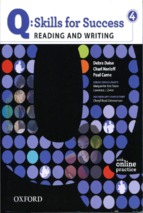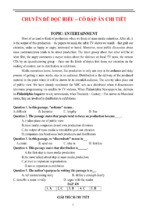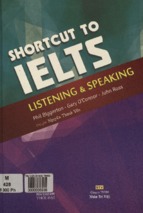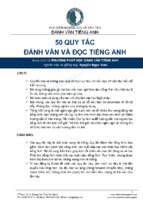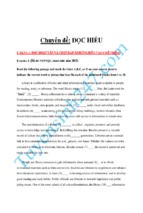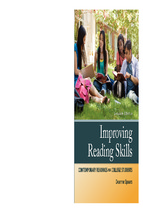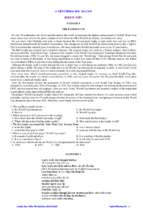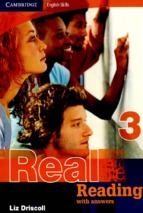Thirteen healthy habits
Voice 1
Thank you for joining us for today‟s Spotlight. I‟m Ruby Jones.
Voice 2
And I‟m Joshua Leo. Spotlight uses a special English method of broadcasting. It is
easier for people to understand, no matter where in the world they live.
Voice 1
Some people believe that the number 13 brings bad luck. But instead, today, the
number 13 is going to bring you health!
Voice 2
On today‟s Spotlight, we will share thirteen different ways to improve your health.
Voice 1
Sometimes it may seem difficult for people to improve their health. We are either
too busy, too tired or we simply have no desire! The first step is good health habits
- actions we do every day, without thinking. Anyone can add these thirteen habits
to their lives.
Voice 3
Healthy habit number one: eat breakfast every morning.
Voice 2
Research shows that eating a meal in the morning results in less body fat, lower
cholesterol counts and less chance of over eating. Eating breakfast can help people
feel better physically and mentally through the day. And, children who eat
breakfast are usually more awake and do better in school! A good breakfast
includes foods from many different food groups like fruits, vegetables, and grains.
Voice 3
Healthy habit number two: eat fish.
Voice 1
The American Health Association suggests eating fish two times each week. Fish
is low in bad fat, or saturated fat. Saturated fat can fill your arteries. The arteries
carry blood through the body. But fish has good fat, or omega-three fatty acid.
Research shows that Omega-three fatty acid can reduce the risk of heart disease.
Omega-three acids may also help people with allergies. Allergies cause a person‟s
body to react badly to things in the environment - like pollen from plants, dirt and
animal hair. Some people do not like fish. And some people cannot easily get fish.
If this is your situation, try to eat soybeans, nuts, or flaxseed!
Voice 3
Healthy habit number three: get enough sleep.
Voice 2
Poor sleep quality can affect our memory and learning. It can also cause traffic
accidents! Studies show that people who do not get enough sleep seem to get in
more accidents. So stay safe and sleep! Experts advise getting at least seven hours
of sleep a night.
Voice 3
Healthy habit number four: make social connections.
Voice 1
Spending time with other people can also improve help. David Jenkins is a doctor.
He says that being social like this can be very helpful to our health. Social groups
can provide support. They might include church or religious groups, sport teams,
art or music groups. The people in the group can offer advice. They can help each
other in difficult times. And they give members a sense of belonging in the
community. Also, being involved in a group keeps your mind busy. An active
mind is a healthy mind!
Voice 3
Healthy habit number five: exercise.
Voice 2
Exercise is very important for good health. It helps control a person‟s body weight.
Weighing too much can cause problems. Exercising also helps grow healthy
muscles, bones, and joints. It reduces the risk of high blood pressure and diabetes.
Exercising reduces the risk of death from heart disease. And it provides mental
well-being. Exercise helps people to think and move better. It helps manage stress,
improves emotions, and gives people lots of energy!
Voice 3
Healthy habit number six: care for your teeth.
Voice 1
Research shows that taking care of your teeth can add over six years to your life!
The blood supply to your mouth and teeth is linked to the rest of your body. If our
teeth are not healthy, often our hearts are not healthy. That is because bacteria from
our mouth can enter our blood system. Then it can travel to our hearts! So
remember to wash, brush and clean between your teeth!
Voice 3
Healthy habit number seven: have a hobby.
Voice 2
A hobby is something that you enjoy doing. It could be running, reading or making
something with your hands. Hobbies help people to relax and rest. Hobbies bring
us joy. Everyone could use a little more joy in their lives!
Voice 3
Healthy habit number eight: protect your skin.
Voice 1
The sun produces ultraviolet, or UV rays. These rays can harm our skin. UV rays
can cause wrinkles and dryness. Too much sun can also lead to painful sun burns
and cancer. Experts suggest always protecting your skin with protective skin
substances, or clothing. They also suggest avoiding the sun between ten in the
morning until three in the afternoon.
Voice 3
Healthy habit number nine: eat healthy between meals.
Voice 2
Eating between meals is called snacking. Many people snack on unhealthy foods foods that are high in sugar, salt or fat. Fruits and vegetables are a better choice.
Fruits and vegetable can help the body fight sickness. They keep the heart healthy.
And they improve memory and reduce the risk of some cancers! Remember an
apple a day keeps the doctor away.
Voice 3
Healthy habit number ten: drink water.
Voice 1
Our bodies are made of mostly water. In fact, our bodies are sixty to seventy
percent water! Water helps our bodies work right. Water helps to clear our bodies
of harmful waste materials. Eight glasses of water a day does a body good!
Voice 3
Healthy habit number eleven: drink tea.
Voice 2
There is some evidence that drinking tea may help improve memory. Tea may
prevent problems with our teeth. And we have already learned about the
importance of caring for our teeth! Tea may even help prevent cancer and heart
disease! It does not matter if you like tea hot or cold, it is good for you either way!
Voice 3
Healthy habit number twelve: take a walk every day.
Voice 1
We have already discussed the importance of exercise. Walking is an easy way to
add exercise to our lives. Instead of taking your car, try walking to where you need
to go. Instead of meeting friends for a meal, meet them for a walk. Show your
children the beautiful world around you - take them for a walk. Once you try, you
will find that adding a walk into your daily life is very easy.
Voice 3
Healthy habit number thirteen: have a plan.
Voice 2
Sometimes being healthy may seem difficult. We get busy. We forget. We feel
tired. There are many reasons why people are not healthy. But, there are so many
more reasons why people should be healthy. Our lives depend on it. So, the best
way to be healthy is to make a plan.
Voice 1
Plan on the days when you will exercise, and exercise on those days.
Voice 2
Plan healthy meals. Make a list of the healthy foods you need. Only buy the foods
on your list.
Voice 1
Plan to go to bed on time. Make sure you get enough sleep.
Voice 2
Plan a walking date. Find a friend who likes to walk and meet him or her a few
times each week.
Voice 1
There are many ways to stay healthy. All it takes is knowledge and a plan!
Voice 2
The writer of today‟s program was Rebekah Schipper. The voices you heard were
from the United States and the United Kingdom. Computer users can visit our
website at www.radioenglish.net. This program is called “Thirteen Healthy
Habits.”
Voice 1
How do you stay healthy? Do you have a health plan? Write us and tell us about
your health habits at
[email protected].
Traditional Children’s Games
Voice 1
Welcome to Spotlight. I‟m Liz Waid.
Voice 2
And I‟m Bruce Gulland. Spotlight uses a special English method of broadcasting.
It is easier for people to understand, no matter where in the world they live.
Voice 1
The children laugh and shout loudly. They are playing games in the playground.
One child is “it”. He runs after a group of other children. He catches one of them.
That second child becomes „it‟. She now chases the other children and tries to
catch one. They are all playing a game of chase or tag.
Voice 2
In another area of the playground, two children each hold opposite ends of a long
rope. They turn it round and round and up and down. Other children take turns to
jump over the rope as it is being turned. They are skipping. And all the children
who are skipping are also singing special skipping songs.
Voice 1
Children in all parts of the world play similar games. Many generations of children
have enjoyed playing these traditional games. But could these games have a more
important purpose? Today‟s Spotlight is on traditional children‟s playground
games.
Voice 2
Experts everywhere agree that play is good for children. They say it is important
for a child‟s mental and physical development. Nicola Butler from the organisation
Play England told the Huffington Post,
Voice 3
„Traditional playground games are necessary for children‟s health, wellbeing and
development. Playing these games lets children learn about friendships. They learn
about arguing, making up, negotiating and resolving disputes, and making the
game fun and fair. But most importantly being involved in these games make
children happy.‟
Voice 1
Did you know that children from many countries play the same or similar
traditional games? Though, these games often have different names in different
countries. The game of leapfrog has been played in the United Kingdom since the
16th century. In this game, one child bends down and holds his knees or ankles.
Another child runs up to the first child, places her hands on the back of the first
child, and leaps or jumps over the first child. Any number of children can play the
game. They all take turns to leap, or jump, like a frog. In other countries children
jump like a different animal. In France children call this same game „sautémouton‟ which means „leap sheep‟. In India they call it „Aar Ghodi Ki Par Ghodi‟
which means „leap horse‟.
Voice 2
Another game children play all over the world is hopscotch. In Albania they call
the game varra. In Germany it is hinkspiel. Yohanes Lie told TOPICS Online
magazine what the game is called in his country,
Voice 4
„When I was a child, my friends and I used to play many traditional games from
my country, Indonesia. A game I played a lot was called One Leg Jump.‟
Voice 1
„One leg jump‟ is a good name for the game of hopscotch. That is because the
name „one leg jump‟ helps you understand how to play the game! The players
mark squares on the ground using a stone or piece of chalk. Children in different
parts of the world make different shapes or grids with the squares. But some things
are always the same. The children all hop or jump on one leg from square to
square. And they must not put a foot on any line.
Voice 2
Very often, children play the game using a stone. They throw the stone onto square
one and take their turn hopping on the whole grid. They hop to the last square.
Then they turn round and hop back. On their next turn they will throw their stone
onto square two. And on their next turn they throw on to square three and so on. If
the stone does not land in the correct square, the child must lose a turn. Maria
Lopez from Columbia told TOPICS how she enjoyed playing hopscotch when she
was a child,
Voice 5
„When I was a little girl, most afternoons I used to play games with my friends in
our street. Rayuela, as hopscotch is called in Spanish, was my favourite game. It is
nice to remember playing games like Rayuela because it shows me that I had a
happy time as a child surrounded by special people who always loved me.‟
Voice 1
It may surprise you to learn that hopscotch is a very old game. Experts say that
nearly 2000 years ago, Roman soldiers used something similar as an exercise.
They had to hop up and down a 100 foot series of squares. They did this to make
them stronger and quicker on their feet.
Voice 2
Marbles is another ancient game that is played around the world. No one knows
exactly how old it is. But we know the Romans played this game too. You can see
children playing marbles on ancient Roman wall paintings.
Voice 1
But what are marbles? And how do you play the game of marbles? Marbles are
very small hard balls. You can find marbles made from different sorts of stone,
including the stone called „marble‟. But most marbles are made from brightly
coloured glass. People play many different sorts of games with their marbles. But
all of these games are called simply „marbles‟.
Voice 2
„The Ring Game‟ is one popular game of marbles. A child uses a stone or chalk to
make a circle or ring on the ground. Those playing the game put a few of their
marbles into the ring. Each child rolls or shoots another marble to try to push one
of the marbles out of the ring. If a player manages to do this he keeps that marble.
Hakan Tuncer, from Turkey, played marbles as child. But he used a triangle shape
- not a circle. He told TOPICS how he and his friends would compete for marbles,
Voice 6
„I think the most important thing was to have as many marbles as we could. We
competed to win the most marbles. The person who won the most marbles was the
leader of the group. And everyone tried to be the leader. Now I understand that this
small competition was our first experience with power and leadership.‟
Voice 1
Traditional playground games are about more than just fun. Hopefully children
continue to learn these games and their valuable lessons for hundreds more years.
Voice 2
Do you remember playing traditional playground games when you were a child?
Tell us about playground games in your country. You can leave a comment on our
website. Or email us at
[email protected]. You can also comment
on Facebook at Facebook.com/spotlightradio.
Voice 1
The writer of this programme was Katy Blake. The producer was Michio Ozaki.
The voices you heard were from the United States and the United Kingdom. All
quotes were adapted for this programme and voiced by Spotlight. You can listen to
this programme again, and read it, on the internet at www.radioenglish.net. This
programme is called „Traditional Children‟s Games.‟
Voice 2
Look for our free listening app in the Google Play Store and in iTunes. We hope
you can join us again for the next Spotlight programme. Goodbye.
Voice 1
Welcome to Spotlight. I‟m Ryan Geertsma.
Voice 2
And I‟m Liz Waid. Spotlight uses a special English method of broadcasting. It is
easier for people to understand, no matter where in the world they live.
Voice 1
Tong was a 9 year old boy. He lived in Vietnam. One day he wanted to go to the
computer store. Tong‟s mother had to work. So he asked a friend to go with him.
His friend could not go either. So, Tong left home alone.
Voice 2
Tong did not come home that night. His parents looked everywhere for him. His
mother told UNICEF,
Voice 3
“We could not find him. So we asked the neighbours to help us. My son never
went to the water, so no one even thought to look for him at the river. We looked
around the house instead and the nearby area. The river was the last place…”
Voice 1
Tong‟s family did find him. But sadly he was dead. He had drowned in the river
near his home.
Voice 2
Like Tong, many young children around the world die from drowning. In October
2012, the World Health Organization released a report. It showed that drowning
was the third most common cause of accidental death. And children have the
highest risk of drowning. But people can prevent drowning accidents with basic
knowledge and training. Today‟s Spotlight is on water safety.
Voice 1
Around the world, children and adults enjoy the water. Water is fun to play in. But
it can also be very dangerous. Knowing how to swim is important for staying safe
in the water. However, just knowing how to swim is not always enough. Natural
water, such as rivers, flow in one direction. This current can be strong. In lakes and
oceans currents can change direction. Often, swimmers cannot see these currents.
And the currents can be strong enough to pull swimmers under the water. But even
without currents, still water can also be deadly.
Voice 2
When someone is under water, the biggest danger is water getting into the person‟s
lungs. This can lead to death by drowning. Drowning can affect people of any age
or swimming skill. But children and people who do not know how to swim are
most at risk for drowning. So, knowing the signs of drowning can save a person‟s
life.
Voice 1
Dr. Francesco A Pia is a public safety expert. In his work, he studies the actions of
people who are drowning. He says a major problem is that most people do not
recognize the signs of drowning. In television shows and films, people who are
drowning usually shout for help. They also struggle a lot in the water. Many people
think this is what drowning looks like. But Pia says these people are not drowning.
They are in aquatic distress. They know they are in trouble. And they are still
mentally and physically able to shout and reach for help. Pia told Slate magazine,
Voice 4
“Except in rare situations, drowning people are not physically able to call out for
help. The lungs and respiratory system were designed for breathing. Speech is the
secondary purpose. Breathing must happen before speech can happen.”
Voice 2
Pia also said that people who are drowning do not struggle in the water. Instead,
their bodies stay straight. Often their arms move out - away from the sides of their
body. This position helps them lift their mouth above water. Often, the person‟s
head will move up and down, in and out of the water. This is the body‟s natural
reaction. Pia calls this the “Instinctive Drowning Response.” This response takes
all of a person‟s energy. So they are unable to make any other movements. And
people can only do this for 20 to 60 seconds.
Voice 1
Knowing the signs of drowning is important. Regis Seng learned these signs in a
water safety class he attended. And it was good that he did. One day, Seng was at a
party. There were adults watching children play in a human-made swimming pool.
Seng noticed an 8-year-old boy experiencing “Instinctive Drowning Response.” He
described the event to the Christian Science Monitor news organization.
Voice 5
"When other people saw the child, they thought he was playing. They thought he
was acting like he was drowning. Even the two people caring for him thought that.
Then we looked at him and thought why is he not moving, he is just floating. It
was very frightening.”
Voice 2
Thankfully, Seng had also learned how to rescue victims of drowning. He had
studied water safety with David Hunt. Hunt is a rescue expert and swim
teacher. He works at a swimming pool in Phnom Penh, Cambodia. When Hunt
began working at this pool, he noticed the lifeguards were not well trained. These
adults were paid to watch the people swimming and to prevent emergencies. But
Hunt soon discovered none of the lifeguards had rescue or life-saving training.
Voice 1
Hunt discovered that this was not just a problem at his pool. There were no
lifeguard training classes for Cambodians. So Hunt decided to start the first
lifeguard training program. He taught his students to recognize what drowning
really looked like. He taught them what to do if a boat turned over. He taught them
how to safely rescue a person in trouble in the water. He also taught them first aid
skills or emergency care they could do while waiting for medical help.
Voice 2
And Regis Seng used the skills he learned in Hunt‟s class. He rescued the 8-yearold boy he saw drowning at the party. He explained,
Voice 5
"We jumped into the pool and we swam back to the boy. We used the skills David
taught us, like how to hold the head... I felt good that I saved somebody's life.”
Voice 1
Seng‟s knowledge and expert training saved a life. But not everyone can attend
water safety training. So, what can you do? Here are some simple rules to keep in
mind.
Voice 2
First, learn to swim, and teach children to swim. Also have children and beginning
swimmers wear life preservers. These devices help the body float and stay near the
top of the water.
Voice 1
Second, never swim alone. This way if you or anyone else has trouble, there is
someone around to notice and help.
Voice 2
Third, know your limits. Do not try to hold your breath longer than you are able.
Do not swim so far or for so long that you become too tired.
Voice 1
These rules may seem simple, but they can help you stay safe. And by
remembering the signs of drowning, you can keep swimmers around you safe
too. Working together, we can all make the water more safe!
Voice 2
The writer of this program was Courtney Schutt. The producer was Mark Drenth.
The voices you heard were from the United States. All quotes were adapted for this
program and voiced by Spotlight. You can listen to this program again and read it
on the Internet at www.radioenglish.net. This program is called, “Water Safety.”
Voice 1
We hope you can join us again for the next Spotlight program. Goodbye.
The Big Business of Flowers
Voice 1
Welcome to Spotlight. I‟m Liz Waid.
Voice 2
And I‟m Bruce Gulland. Spotlight uses a special English method of broadcasting.
It is easier for people to understand, no matter where in the world they live.
Voice 1
All over the world people love fresh flowers. They smell good. And they look
beautiful. In many countries people give flowers to each other as gifts. People may
give flowers to say, „Happy Birthday‟, „Thank You‟ or „I love you‟.
Voice 2
Some people who give flowers get them from their own land or fields. Other
people buy flowers from a market or store. Sometimes these flowers come from the
local area. But often they have travelled thousands of kilometres. They have come
from another country.
Voice 1
One listener from Cayambe Ecuador told Spotlight that he works on a flower farm.
The farm grows beautiful roses. Workers cut the roses and they are sent around the
world. But Ecuador is only one place that sells cut flowers like this. Today‟s
Spotlight is on the global flower industry.
Voice 2
Flowers are a form of natural beauty. But they are also big business. The cut flower
industry is extremely successful. Experts estimate that this global trade is worth
more than 100 billion dollars every year.
Voice 1
For many years countries in Western Europe led the cut flower industry. The
Netherlands was the centre of the industry. It was the major producer of cut
flowers. It was the most important cut flower trading nation. Today the
Netherlands is still the largest exporter of cut flowers in the world. But there have
been changes in the last 20 years. Developing countries have successfully entered
the flower industry. They have even reduced the Netherlands‟ global share of
exports. Countries such as Kenya, Colombia and Ecuador are new centres of
production.
Voice 2
So which countries buy all of these flowers? People in Germany, the United States,
the United Kingdom and the Netherlands are the world‟s biggest buyers of cut
flowers. Many of the flowers they buy are imported. For example, 82% of cut
flowers sold in the United States have been imported. The United States gets most
its flowers from Colombia, Ecuador and Mexico. Europe imports many of its
flowers from countries in Africa like Kenya.
Voice 1
Developing countries like Ecuador, Colombia and Kenya are successful in the cut
flower industry. These countries even have some advantages over countries in
Western Europe. They have much better climates for producing flowers like roses.
The temperature is warm all year. And labour costs less too. Flower farms use a lot
of labour to grow flowers. So many people are able to work and earn money in the
industry.
Voice 2
Nathalie Cely was the Ambassador of Ecuador to the United States. In the
Huffington Post she explained that the flower industry is very important.
Voice 3
„One out of every four roses bought in the United States comes from Ecuador. The
rose industry in Ecuador provides good paying jobs for thousands of poor country
women. Many of these women are heads of families.‟
Voice 1
But countries like Ecuador, Colombia and Kenya are thousands of kilometres away
from their European and North American markets. And cut flowers have a limited
life. Workers must treat them with great care. They control the temperature and air
quality around the flowers. The flowers must reach their market quickly. If this
does not happen they will be ruined or die. So flower farmers use airplanes to fly
their flowers to market. Jane Ngige is the Chief Executive of the Kenyan Flower
Council. She told CNN that being able to fly flowers to their market is very
important.
Voice 4
„A direct flight to the market is key owing to the fact that this is fresh produce and
it needs to get to the end user quickly in order to promise quality.‟
Voice 2
However, flying flowers around the world uses a lot of energy. This produces
carbon. Some people may be concerned that this is not good for the environment
and climate change. But others are not worried. Hilary Benn was the United
Kingdom‟s International Development Secretary. In 2013 he told a conference that
flying flowers around the world used less energy than growing flowers in Europe.
Voice 5
„People often do not understand that they can support developing countries and
reduce the release of carbon. Recent research shows that flowers flown from Africa
can use less energy overall than those produced in Europe. This is because they are
not grown in heated glass houses.‟
Voice 1
Some people raised another concern about flowers produced in developing
countries. In some places there were problems for flower workers. They worked in
poor conditions. Sometimes they worked long hours with no rest periods. They
were paid low wages. Farmers did not protect workers from chemicals used.
However in recent years working conditions have improved on flower farms in
many countries. And hundreds of flower farms have become fair trade farms.
Voice 2
Fair trade organisations decide if a farm meets the fair trade quality. On fair trade
farms workers receive better wages. And they have safe working conditions. Fair
trade flowers cost buyers about 10% more money. This extra money is called the
„social premium‟. It is controlled by groups of local workers.
Voice 1
The workers use the social premium money to pay for community projects. Each
local project is different. But all improve quality of life. Education projects provide
equipment, classes and toilets for schools. Parents get help to pay the cost of
sending their children to school and university. Carlota Garcia works on a flower
farm in Ecuador. She told the organisation Fair Trade USA how she was helped,
Voice 6
„Thanks to this programme, I was able to keep my children in school and give
them everything they need to study: clothes, joining costs, school supplies.‟
Voice 2
Other social premium projects help workers buy their homes. Health projects
prevent diseases such as malaria and cholera. Environmental projects include green
energy and tree planting. Samuel Atieno lives near the Athi River in Kenya. He led
one social premium workers group. He told the organisation Fairtrade Foundation
of his experience and big hopes for the future,
Voice 7
„Fair trade is a life changer. If this premium money can change the life of a worker
in such a short time; if it can turn around the life of a family, of a community; then
can‟t this premium can also change the structure of the country? In the long run we
will affect Kenya and then even Africa.‟
Voice 1
Do you buy flowers? Would you buy fair trade flowers? What do you think about
flying flowers around the world? Tell us what you think on our website.
Voice 2
The writer of this programme was Katy Blake. The producer was Michio Ozaki.
The voices you heard were from the United Kingdom and the United States. All
quotes were adapted for this programme and voiced by Spotlight. You can listen to
this programme again, and read it, on the internet at www.radioenglish.net. This
programme is called, „The Big Business of Flowers.‟
Cleaning the World Together”
Voice 1
Welcome to Spotlight. I‟m Joshua Leo.
Voice 2
And I‟m Liz Waid. Spotlight uses a special English method of broadcasting. It is
easier for people to understand, no matter where in the world they live.
Voice 1
Rainer Nolvak is a business man. He is from the Eastern European country
of Estonia. Estonia is famous for it‟s beautiful forests and country areas. But
Nolvak and his friends saw a problem. For many years people had been leaving
their garbage in the forests. The forests of Estonia were full of waste. But Nolvak
and his friends wanted to protect the environment. They wanted to clean up all
the garbage in Estonia. And Nolvak had an idea. What if they could clean up the
whole country in just one day? Today‟s Spotlight is on his idea called Let‟s Do It!
Voice 2
Garbage is not just a problem in Estonia. Some countries produce more garbage.
Some produce less. But every day each person in the world creates garbage. There
is so much garbage that people do not know where to put it. Sometimes they put it
in the wrong place. This is usually against the law. This illegal garbage causes
problems for the environment.
Voice 1
In Estonia, the problem seemed very large. Half of the country of Estonia is
covered with beautiful forests. But people had been illegally dropping
their garbage in the forest. Tiina Urm was one of the first people involved with the
project. The Let‟s Do It! team says that illegal garbage became a problem
when Estonia was part of the Soviet Union. The forests belonged to the state.
People did not feel that the land was their own. So they left their garbage in the
forest. In 2007 Rainer Nolvak and his friends decided to do something about the
illegal garbage in Estonia. But how could a few people clean up so much waste?
Voice 2
The first step was to help people to see the problem. The garbage was not just an
environmental problem. It was a problem of people‟s attitudes. Estonians had
learned not to think about the waste. They did not even see the problem of
the garbage. Rainer Nolvak got together with a team of 20 friends. They were all
people who cared very much about the forests of Estonia. They began to make a
plan about how to get rid of the garbage. They were very excited about this project.
Soon, other people began to become excited too. These people joined the group.
Soon over 600 people were involved.
Voice 1
They named the project Let‟s Do It! Estonia. The Ministry of the Environment
gave them some support. Many other organizations became involved. Famous
actors and musicians also took part. Even the President of Estonia joined in. They
sent information about Let‟s Do It! Estonia through the country. People heard
about the clean-up program on television and over the internet.
Voice 2
Information about the program was spreading around Estonia. Now, Let‟s Do It!
needed a plan for action. Technology experts used their skills to help. They
developed a special computer program. It used a map of Estonia made from images
taken by satellites.
Voice 1
Team members went into the forests to find where the garbage was. They used
their mobile phones to mark every place where they found illegal garbage. They
did this using GPS, the Global Positioning System. This system uses satellites to
give exact locations. They sent the information to the computer program. Then, the
marked garbage places appeared on the map. The map gave the team a lot of
information. They could tell how much garbage was in each area. And what kind
of garbage it was. Anyone could go on the internet and see the map.
Voice 2
The team found a surprising result. There was over 10,000 tonnes of waste in the
forests of Estonia. Tiina Urm says that this knowledge was a very important step.
She explained that when people saw how much waste was around their own
homes, they were shocked. They understood that something was wrong.
Voice 1
This was a good first step. But now the project needed to get people to clean
the garbage up. Let‟s Do It! Estonia got help from many companies. One company
let them borrow the big trucks and machines needed to carry the waste. A gas
company provided fuel at a low price. But the project also required thousands of
people to help.
Voice 2




